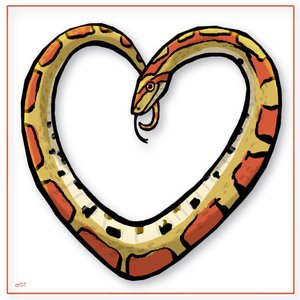A rescue finished and the snake successfully bagged, most onlookers pose to our members several questions – “Weren’t you scared when you saw the snake?”, “What if the snake had bitten you?”, “How can you tell that it is a venomous or a non-venomous one?”, “Have you ever been bitten by a snake before?” being some of them. It goes without saying that our members are all too happy to share our experiences and learning from getting to know these beautiful beings, with an interested audience.
A typical rescue however goes much beyond just spotting and rescuing a snake, rather, it is a much more insightful demonstration than what meets the eye. Here’s a glimpse into the makings of the ‘3500 snakes rescued per year’ success story of our society so far:
If you dear reader, think that learning to handle a snake is the trickiest part of our job, please let us fess up – that’s where the easy part ends!
For snakes are the only species to have evolutionarily conquered such heterogeneous habitats – from deserts to seas, underground retreats to humanly unscalable tree branches, and thrive in them too! The ambiguity thus, of each one of our rescue situations is so diverse, that we are often left with thinking of them as snowflakes – with no two situations ever alike!
Scaling heights, crouching under parapets, splashing in underground water sumps, gushing plumbing pipes, dismantling automobile bumpers….we’ve woken so many sleeping cheetahs, groundhogs, fishes, rhinos…within us in overcoming the many odds and ends in the line of pursuing our passion, each one of us can boast of accommodating a mini circus within!
And that’s not it. Rescuing snakes isn’t just a matter of overcoming your physical barriers such as the above cited instances, rather, an interplay of one’s psychological and analytic quotients as well. Read on to know how-
A rescue starts the minute a caller calls on the helpline number requesting intervention to safely relocate a snake (typically snakes, but we have over the years rescued close to an impressive 100 non snake species – from monitor lizards, pea fowl, numerous fledglings, turtles, and so no) from their premise. The helpline coordinator is immediately faced with having to send across a rescue volunteer keeping in mind-
- a) The member’s geographic proximity from the rescue situation to ensure fastest intervention possible (as snakes are very shy of human interference, they are always looking at slithering farthest away from such encounters)
- b) The member’s availability
Once intimated about the details, the rescuer in turn needs to act upon it quickly, giving oneself just enough time to quickly grab the ‘handling stick’ and a rescue bag/pillow cover/safe container before going vroom vroom vroom.
Communicating with the caller for directions and assuring them of reaching soon done, the next crucial step for any rescuer is to correctly identify the snake (Lesson 1 of the ‘to become a rescuer’ journey) and then take measures to rescue it, as the situation may demand. With all due respects to a non-venomous snake, a venomous one demands extra precautionary measures while handling, and ‘thinking on the toes.’
For instance, a venomous snake is to never be lifted off the ground or handled, without the aid of the handling stick and even then, is to be handled only by the tail, all the while supporting its body with the handling stick, versus a non-venomous one where one can employ ‘mid-body handling’ without the aid of a handling stick.
A farmer seldom requires weather forecasting updates – the changing skies are indication enough. And so it is with our seasoned rescuers who usually can gauge which snake to expect at rescue situations, from the geographic make-up of the place (a nearby water body for instance could result in sightings of relatively large numbers of aquatic snakes like the Checkered keelback), previous sightings (frequent visits by the Spectacled Cobra could mean that they are in abundance around), and the time of the day (Rat Snakes are diurnal, meaning that they are active during the day – these snakes might come out in the day time to bask in the sun, as opposed to say, the Common Krait which are active in the night time or are nocturnal, and are usually spotted in the night time when they set out to forage).
Simultaneously comes the herculean task of crowd management. More often, our rescuer is greeted at the rescue site with utter mayhem, what with the word of a ‘snake on the lurch’ rousing a big crowd, and needless to say, an even bigger din (Take it from us – crowd management in such cases takes the awakening of patience, of the proportions of a gargantuan blue whale!).
The dinosaur of breaking through the bevy of folks tackled, next comes the task of finding Nemo – in this case, a cornered snake desperate to get away as far away and as fast as possible.
A cornered rat is easy to trap, a cornered snake never is. For outnumbered manifold, the agile being might just take to seeking refuge into the nearest crevice, slither down piles of knick knacks, coil itself into an automobile’s engine ……the avenues being endless as the situation might deem itself fit.
Snakes don’t have a time sense unlike us humans, so our rescuers have had to at times wait for several hours at a stretch, foregoing all physical comforts temporarily. In especially tricky situations where it might be too risky to grab the snake from inside a cranny in case it proves to injure the already stressed being, the only alternative left is sometimes to wait for it to come out of its own accord.
But as the saying goes, “All’s well that ends well”, and nothing matches the sheer triumph and contentment that accompanies rescuing the snake, despite all odds and successfully bagging it.
It is one thing to engage in a presumably risk-taking exercise once in a while, and another thing to make it a regular practice. In this, each one of our rescuers is perhaps no less than ‘conservational ambassadors,’ in bridging man vs wild conflicts. The satisfaction of having negated a possibly life threatening situation – for both the animal in question from being killed, and the humans involved from suffering a venomous bite, is without doubt the best reward that we at FOSS celebrate, as it resonates with our undying passion to constantly save, and tirelessly serve.:)







